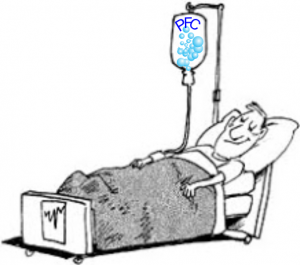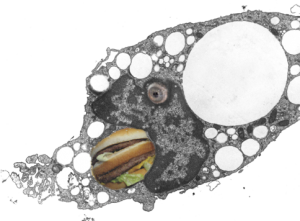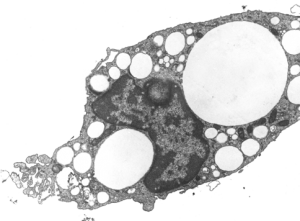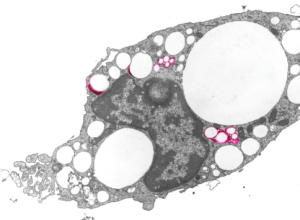II was reading a pdf available online on perfluorochemical based blood substitutes, and also in general thinking about liquid breathing of perfluorocarbons. I decided to google the topic to see if any new research had surfaced and I found this 1994 article ” Stephen F. Flaim (1994) Pharmacokinetics and Side Effects of Perfluorocarbon-Based Blood Substitutes, Artificial Cells, Blood Substitutes, and Biotechnology, 22:4, 1043-1054, DOI: 10.3109/10731199409138801″ My guess is the journal is no longer active. But reading the pdf (yes i went to the literature cited section to see if there was any mention of the articles I had published on the topic, and while Leland C. Clark, Jr showed up, none of the morphological studies by MOI were cited) but it read like a sales pitch for the use of perfluorchemicals (which I personally never thought were that kind to the body). After reading about ten times phrases like “these effects are reversible” “no visible signs of interstitial edema or pulmonary lesions” and “no evidence of interstitial edema, necrosis or fibrosis” or “no organ damage is manifested” and “not regarded as significant side effects” I about gagged. What, is this the same stuff I did research on, found gobbled up to massive extent in all the reticuloendothelial cells, even in parenchymal cells, even tested as a stimulant to the immune system to reduce tumor graft growth. Is this the same stuff that I would not have put in my own veins or lungs under any circumstance? Ha ha…are we talking about the same thing here…. perfluorochemicals for liquid breathing, radio contrast, and blood substitutes.. yep. So I boldly googled the author… ha ha… there might have been some kind of “bias” in his article…. after all he had a vested interest in a company that was marketing the stuff. Alliance Pharmaceutical Corp……. not good… and its really good that they are defunct.
Stephen Flaim: From scientist to prolific entrepreneur
I also found this amazing blog which anyone interested in the topic should read. And felt compelled to modify their cartoon and when requesting permission the blog was 404… so who knows whose it is.
4 things learned– watch out for scientific bias, keep up your blog posts, be careful about what you let the MDs do, big pharma rarely helps.


